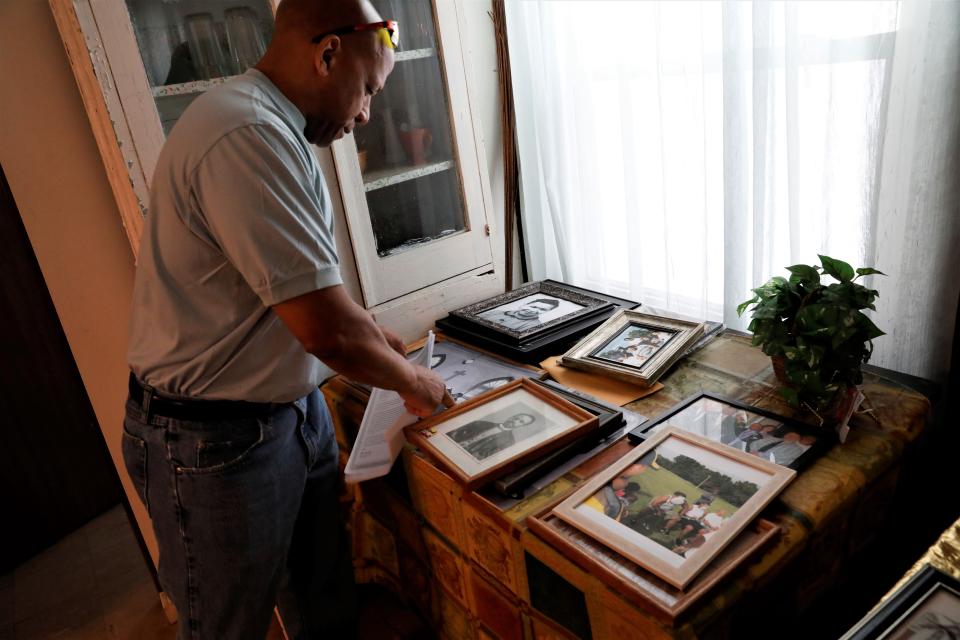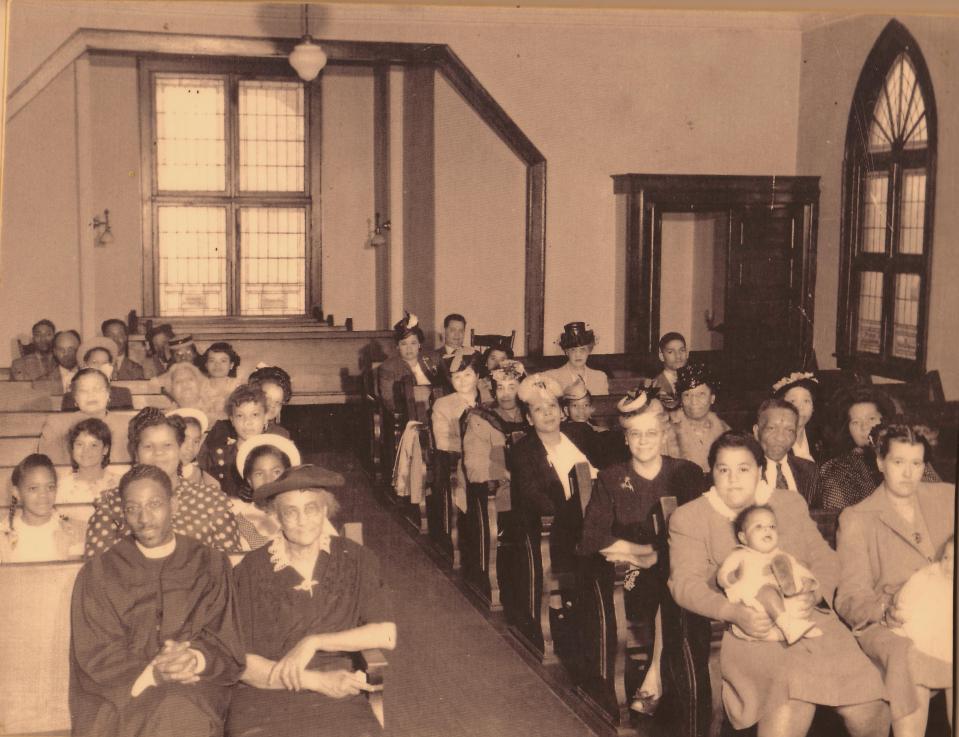Churches play a major part in the civil rights movement
LANCASTER − The church has long been a major part of the civil rights movement through the years as Black people have fought for equal rights.
"I think a big part of it came out of there," Allen Chapel Pastor Evan Saunders said. "When you're talking about church you're talking about Christ, and Christ came to set us all free of our sins. As people started receiving Christ and realizing that their sins were going to be removed and they were free, they started to realize that if I'm free in spirit with God, why I am still enslaved in this world?"
Saunders said the church was also a place where Black people could be safe and feel comfortable and realize their treatment was not right.
"We can be free," he said. "We can have our own farms. We have our own schools. We can have our own churches. We can be able to walk up and down the roads and not have to worry about our lives."

True Vision Christian Community Church Lead Pastor Casanova Green agrees with Saunders' take on the church's role in the civil rights movement.
"That's wildly accurate," he said. "The church was the place where the community could gather and be themselves. The language of faith is what got everybody through. That's why you hear hymns and church songs repurposed for the civil rights movement. Because that was the common language. That was the thing that all Black folk understood, saved or unsaved."
Green is also the vice presiding bishop of the Katartsmos Collective network of churches.

Green said Blacks at the beginning of the civil rights movement knew they needed God's help.
"They needed a miracle," he said.
As for the church's role today in civil rights, Green said it depends on what the heart of the church's mission is in terms of civil rights.
"The true heart of the church is to bring people together," he said.
But Green said the current political and spiritual divide in the country sometimes makes that difficult.
"In today's age we have to shift the narrative from words of division to words of unity," he said. "Understand that unity is not assimilation. It's a celebration of all the things that people bring to the table."
Green said people must focus on building authentic relationships with those that are different from them to shift the narrative.
"Echo chambers are dangerous in all forms of culture," he said. "What binds all the denominations together is Jesus Christ and his birth, death and resurrection. So we have to be willing to come together within ourselves, put differences aside and truly speak and truly embody the heart of God, which is for all of us to be one."
Green said there is still a civil rights struggle ongoing today.
"But the narrative has broadened to the Latino community, to the LGBTQ, to other marginalized groups," he said. "Even the role of poverty has become an issue. So we have to address civil rights intersectionally rather than going one at at time. Because if you address the intersections, everyone is able to get what they need instead of looking at one issue at a time."
Saunders said the Lancaster area doesn't have as many Black people as other areas that are going to church and depending on it today.
"There was a time period in Lancaster where Black people married Black people," he said. "Black people raised Black children. They lived in an area and they went to school in the same area. They didn't have the freedom to play with the white kids. There wasn't a lot of mingling going on."
Therefore, Saunders said Blacks were either forced to or wanted to worship, play and be with other Blacks. He said that is not the case today, though.
"Today's world there is a lot of integration going on," Saunders said. "Today, Blacks are marrying whites and they're able to live in different parts of the city. They're able to transport their kids to different schools if they want to, even outside the city. So there's a breakdown within the church where it didn't used to be. I think we have a falling away from the church."
He said parents and their children are not going to church in some cases. which lessens the support of the church.
So how do you change that?
"That's a great question, because I don't know," Saunders said. "I'm trying. At Allen Chapel we're trying to make a difference. We're hoping to try and develop different programs that we can attract people in."
He said some people are hurt by the church because it has turned a lot of people away by judging them.
"A lot of people are going through transactions in their lives that as Christians I don't agree with their lifestyle," Saunders said. "I don't agree with the choices that they make. But I'm still there to try to show them the love of God. I'm still there to show them that from what I believe and what I read that this is the lifestyle that you should be trying to live."
The Allen Chapel congregation will unveil a historical sign commemorating the church from 1 to 3 p.m. on Feb. 25. The church is located at 221 E. Walnut St.
jbarron@gannett.com
740-681-4340
Twitter: @JeffDBarron
This article originally appeared on Lancaster Eagle-Gazette: Churches have long been a major part of the civil rights movement

